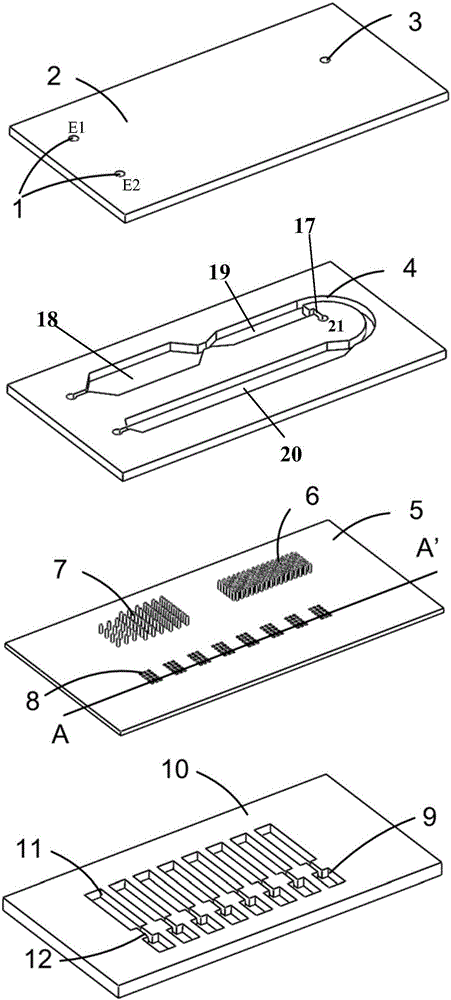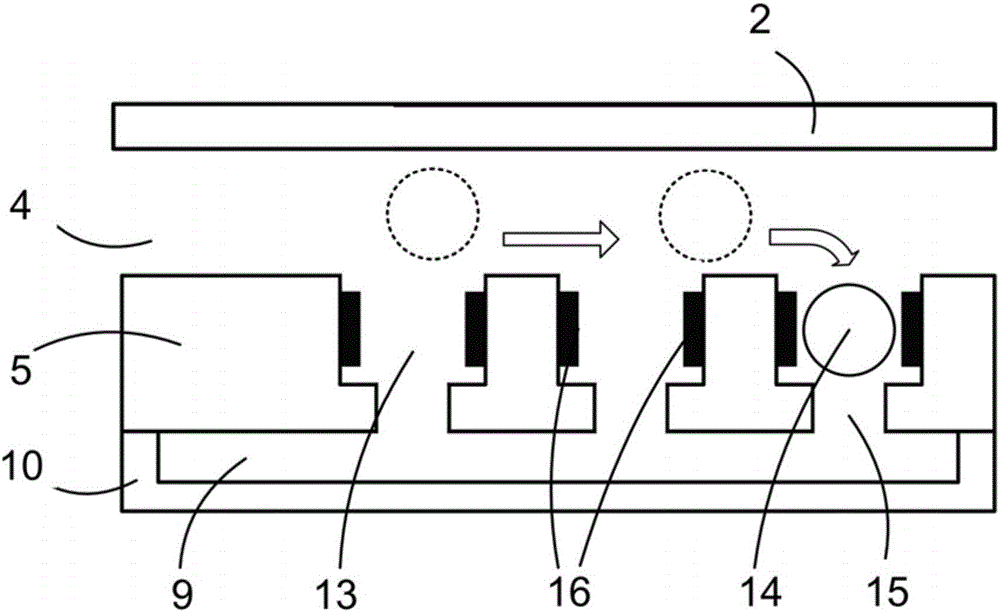Single-cell-sorting and multigene-locus-detection micro-fluidic chip for expressing EGFR
A microfluidic chip and single-cell technology, applied in animal cells, fluid controllers, tumor/cancer cells, etc., can solve the problem of screening, identifying, lysing, and reducing the quality of amplification of tumor cells that do not involve highly integrated EGFR. Problems such as locus gene amplification, to achieve the effect of easy loss and loss, reducing loss and reducing impact
- Summary
- Abstract
- Description
- Claims
- Application Information
AI Technical Summary
Problems solved by technology
Method used
Image
Examples
Embodiment 1
[0038] Example 1 Microfluidic chip for single cell sorting and multi-gene loci detection expressing EGFR and its preparation method
[0039] The microfluidic chip provided in this embodiment includes a four-layer structure stacked together and sealed to each other, from top to bottom are a top cover, a microfluidic channel layer, a substrate with a microwell array, and a cavity group. bottom plate.
[0040] 1. Top cover and fluid channel
[0041] When identifying cells, light needs to pass through the top cover, so the top cover needs to be made of a transparent material; at the same time, the top cover needs to be made into an interface for the fluid to enter and flow out, so it needs to be able to open holes; finally, the top cover needs to be sealed with the fluid channel. Connect together and achieve sealing, so the choice of material should consider the compatibility with the fluid channel.
[0042] The substrate material can be made into specific specifications and sha...
PUM
 Login to View More
Login to View More Abstract
Description
Claims
Application Information
 Login to View More
Login to View More - R&D
- Intellectual Property
- Life Sciences
- Materials
- Tech Scout
- Unparalleled Data Quality
- Higher Quality Content
- 60% Fewer Hallucinations
Browse by: Latest US Patents, China's latest patents, Technical Efficacy Thesaurus, Application Domain, Technology Topic, Popular Technical Reports.
© 2025 PatSnap. All rights reserved.Legal|Privacy policy|Modern Slavery Act Transparency Statement|Sitemap|About US| Contact US: help@patsnap.com



